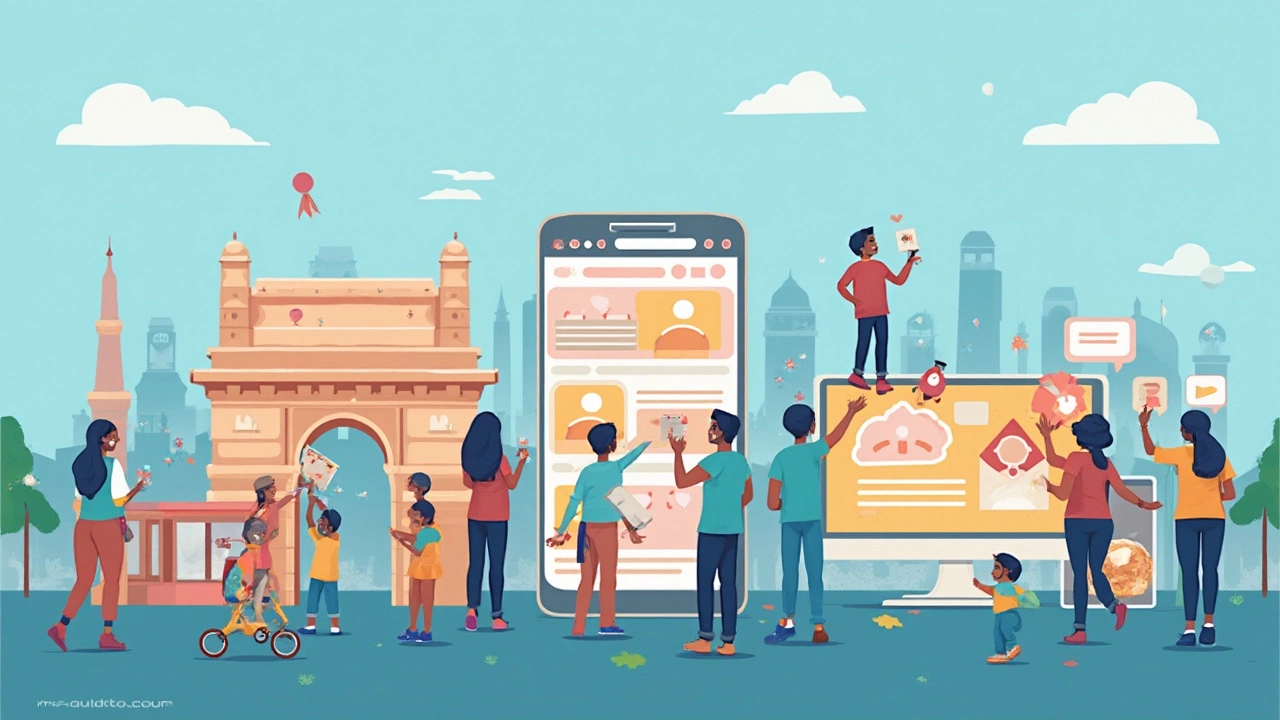Online learning isn’t just for college kids anymore. Loads of adults turn to e-learning platforms to pick up job skills, prep for certifications, or even just learn something fun like guitar or coding. With work from home and hybrid jobs sticking around, demand for digital learning keeps shooting up—it’s not just a pandemic thing. The numbers are wild: platforms like Coursera and Udemy pull in tens of millions of users each month. Some companies even run special e-learning hubs just for their staff.
Why are these platforms everywhere? Simple—they’re convenient. You don’t have to commute, wear pants, or sit through boring lectures at a set time. Instead, you study on your couch, at your own pace. And there’s a course for almost anything. From learning Excel tricks to prepping for big career changes, the choices are crazy diverse.
- Why E-Learning Platforms Dominate
- Types of E-Learning Platforms
- Key Features That Users Love
- Tips for Making the Most of Online Learning
Why E-Learning Platforms Dominate
Think about your last learning experience. Did you have to register for a class, drive across town, or follow a rigid schedule? With e-learning platforms, that hassle is gone. These sites let you learn wherever and whenever, whether it's 2 a.m. or during your lunch break. That alone explains a lot about why they’re so popular.
E-learning platforms have exploded in popularity for a bunch of reasons. For starters, they break down the walls of expensive classrooms and make lessons from expert instructors available to anyone with internet access. In 2025, platforms like Udemy, Coursera, and Khan Academy offer thousands of courses on just about every topic you can think of—from high school algebra to digital marketing, even mindfulness and public speaking.
Here’s why these platforms keep winning over more people:
- Access for Everyone: No location or age limits. If you’ve got a smartphone, tablet, or laptop, you’re in.
- Affordability: Many platforms let you access basic courses for free and only charge for certificate programs or extras. Some employers sponsor their teams to upskill, because it’s way cheaper than traditional training.
- Pace Yourself: You can pause, rewind, and repeat lessons as much as you need. Struggling with a concept? No rush—just review it again.
- Instant Feedback: Quizzes, forums, and assignment grading usually happen right away. No waiting weeks for teachers to return your test papers.
- Wide Selection: The best platforms constantly update their catalogs with new courses in tech, arts, business, and just about any specialty you can name.
There’s also flexibility for teachers and experts. Anyone with knowledge can sign up and teach. That means new voices and fresh content get added all the time. Couple that with tight links to the job market—think Google’s own courses on Coursera or project-based tutorials from real pros—and it’s no surprise digital learning platforms have become the go-to tool for today’s learners.
Types of E-Learning Platforms
Not all online learning hubs work the same way. Some are built for giant classrooms, others for one-on-one coaching. Here’s a quick breakdown of what’s out there:
- LMS (Learning Management Systems): Think Moodle, Blackboard, and Canvas. Schools and companies use these to manage everything from course sign-ups to grades and homework. They’re like the backbone for formal education online.
- MOOCs (Massive Open Online Courses): You’ve probably heard of Coursera or edX. These sites let anyone join free or low-cost courses from big-name universities or pros in the field. The focus is on learning at scale, so class sizes can hit the thousands.
- Course Marketplaces: Udemy and Skillshare pop up here. Anyone can sign up as a teacher or student. There’s a course for pretty much anything and the pricing is often cheaper than traditional schooling.
- Corporate Training Platforms: Platforms like LinkedIn Learning or SAP Litmos focus on professional skills—think workplace skills, certifications, and onboarding. Tons of companies use these for in-house staff training.
- Specialized Platforms: These are the niche options, like Duolingo for languages, Codecademy for coding, or MasterClass for lessons from celebrities.
Each type offers different perks. For instance, MOOCs are awesome for anyone craving smart university lectures without the price tag, while a e-learning platforms marketplace like Udemy is perfect for hobbyists who want quick, practical skills.
| Platform Type | Popular Examples | Who Uses Them | Typical Class Size |
|---|---|---|---|
| LMS | Canvas, Moodle, Blackboard | Schools, Colleges, Companies | Varies (10s to 1000+) |
| MOOC | Coursera, edX, FutureLearn | Public Learners, Students | 1000s+ |
| Course Marketplace | Udemy, Skillshare | Anyone | 10s to 1000s |
| Corporate Training | LinkedIn Learning, SAP Litmos | Employees, Professionals | Teams/Whole Companies |
| Specialized | Duolingo, Codecademy, MasterClass | Hobbyists, Focused Learners | 1 to 1000+ |
If you’re looking to join a course, think about your goal. Need a certificate for work? A MOOC or corporate e-learning site makes sense. Just need to pick up a random skill? Try a marketplace or a specialized app. There’s something built for how you like to learn.

Key Features That Users Love
There’s a reason folks keep coming back to e-learning platforms. The features make life easier, and honestly, some of them are game changers if you’re trying to learn anything online.
First up, most platforms let you learn at your own pace. No set class times, no pressure. You can binge a bunch of lessons in one weekend or chip away at them after work—totally up to you.
Another thing people rave about: interactive content. It’s not just endless videos. You get quizzes, practice problems, discussion boards, even simulations if you’re learning something technical. Coursera and Khan Academy are great at mixing in these tools to make lessons stick.
Certificates are a big deal too. Finish a course on LinkedIn Learning or Udemy, and you get a shareable badge or certificate you can slap on your resume or LinkedIn profile. Employers actually recognize some of these—especially for tech skills and project management.
If you worry about being lost on your own, many platforms have strong community vibes. Think instructor support, active student forums, or real-time chat. It makes a huge difference if you get stuck or just need motivation from folks in the same boat.
- e-learning platforms update content fast, so you’re not stuck learning stuff that’s out of date. This is super handy in fast-changing areas like digital marketing or programming.
- Most sites are mobile-friendly now, so you can study on your phone wherever—on the bus, during a lunch break, or even at the gym.
- Progress tracking and reminders help you actually finish what you started. You’ll get nudges to keep you moving if life gets in the way.
It’s this mix of flexibility, recognition, and handy tech that makes the big names in online learning so popular right now.
Tips for Making the Most of Online Learning
So you’ve signed up for an e-learning platform, but finishing a course feels tougher than you thought? You’re not alone. A study from MIT shows that online course completion rates float between 4% and 15%. The big challenge? Staying motivated when nobody is looking over your shoulder.
Start by creating a simple game plan. Don’t just skim random courses—set one clear goal. It could be mastering Excel, learning Python, or nailing a certification. Break your goal into small steps, like finishing one lesson per day. Tiny wins add up fast.
- Pick the best time for you to study. Early morning, lunch break, or evenings—whatever works. Stick to it like you would a gym routine.
- Leave your phone in another room while watching videos or doing quizzes. Distractions can wreck your flow. A Cornell University study found that people switch tasks every 40 seconds if their phone is near them.
- Review notes and key concepts as you go. Don’t just watch—take five minutes to recap what you learned. Repetition is the key to remembering stuff long-term.
- Join community groups, forums, or live sessions if the platform has them. Chatting with other learners or asking questions helps you stay on track and makes it less lonely.
- Check out the extra resources most e-learning platforms give you. Download cheat sheets, practice worksheets, or use flashcards. They’re gold for quick revision before exams or job interviews.
Don’t be too hard on yourself if you get stuck. Most learners hit a wall at some point. Try switching up your study spot, or tackle the next lesson at a different time of day. And if you get stuck on a tough part, ask for help in the course forums. People love to help out, and you’ll pick things up a lot quicker.
The best part? You decide how fast you go. Stick with it for a few weeks, and you’ll be shocked at how much you can learn on your own terms.

Write a comment